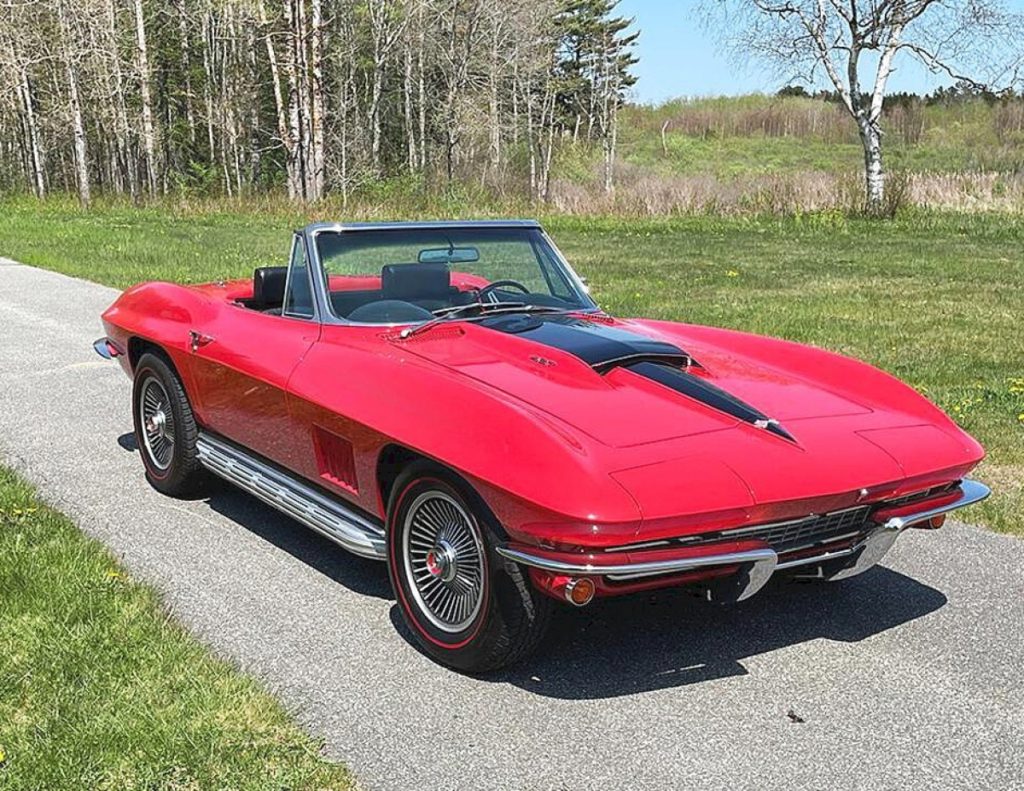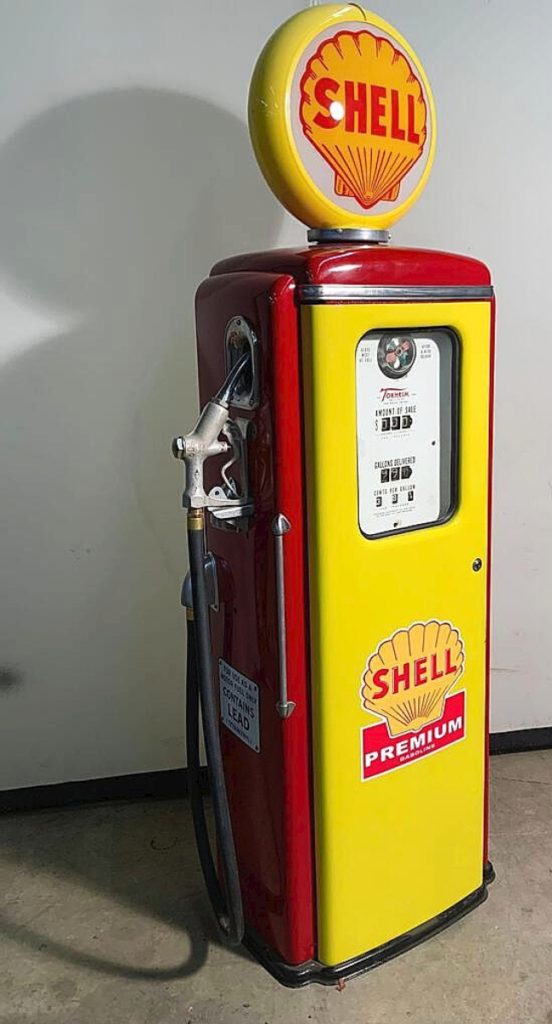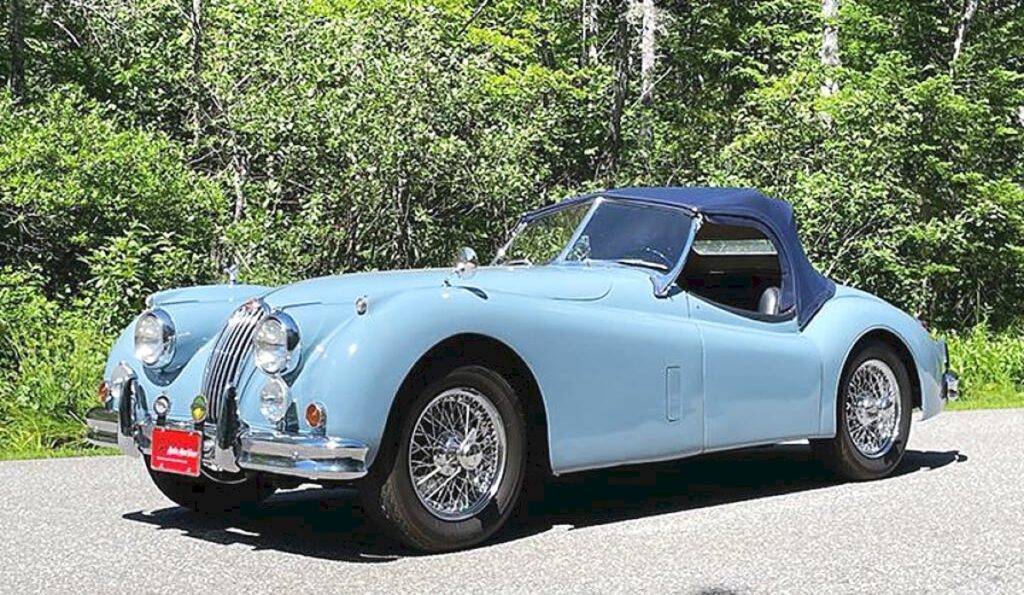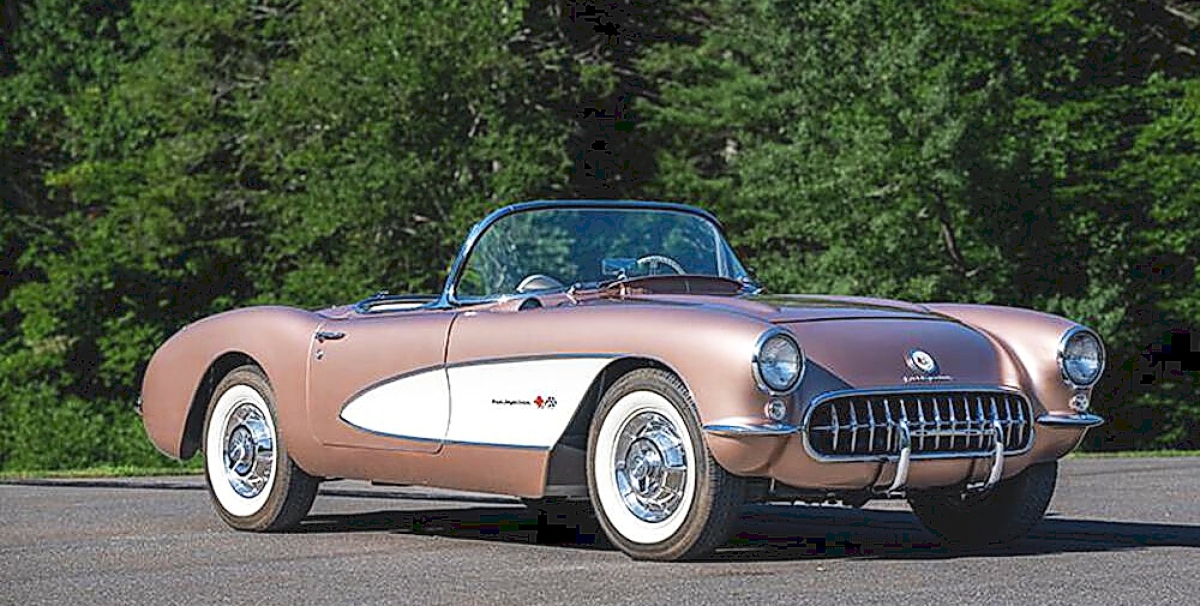
The star — and top lot — of the sale at $184,250 was this 1967 Chevrolet Corvette roadster with a 427ci /400hp engine. It was described online thusly: “since its inception, the Chevrolet Corvette is widely considered to be America’s true sports car. Across multiple generations and styles, one constant has remained. More than just a car, the Corvette is a living icon, loved, adored by all.”
Review & Onsite Photos by Rick Russack, Catalog Photos Courtesy Owls Head Transportation Museum
OWLS HEAD, MAINE – It was a most unusual auction! It cost $100 to register to bid and about 400 did. About 1,500 people attended the auction, at a cost of $20 per person. Approximately half of the more than 200 cars to be sold had reserves and it was clear which those were: unreserved cars had signs on the windshield that read, “No Reserve.” Many consignors were present to talk about their cars with potential bidders.
Each car was driven into the auction hall and discussed at length. The preview was spread over several acres, some cars were under tents, some were out in the open and a few were within the museum buildings. Adjacent to the Owls Head Transportation Museum was the Knox County airport so bidders with their own planes could fly in, get out of their plane and walk a short distance to the auction site. The two-day auction, which took place August 26-27, is the largest fundraising event for the museum and was the 44th sale it has conducted. Printed catalogs were not produced for this sale, but the online descriptions were extensive and detailed. The sale grossed about $6 million; six cars sold for more than $100,000 and dozens sold for five figure prices.
Age and rarity, even condition, are not necessarily the main factors determining value of the type of cars being bought by today’s collectors and investors. John Bottero, assistant executive director of the museum, explained, “The people that are buying cars today are, for the most part, in their forties, fifties and sixties. The cars they are buying are the cars they grew up with; cars that were made in the 60s, 70s, 80s, and later. These collectors have less interest in 100-year-old cars, even though they may be quite rare. Race cars are extremely popular, and many vintage racers are still raced today. While provenance is of importance in many areas of collecting, that is even more true with race cars. Who drove it? Where was it raced? Did it win?”

The restored double-sided Shell Premium vintage gas pump was more than 6 feet tall. The globe was replaced, and it finished at $3,410.
The degree of original condition is an important factor, as demonstrated by the car that brought the highest price of the sale: $184,250, for a 1967 Corvette Roadster. At a time when most cars in dealer showrooms lacked features we take for granted these days, this Corvette had many factory installed options: air conditioning, AM/FM radio, headrest seats, several power-enhancing options and more. But of most significance to collectors was the fact that serial numbers of all major components of the car matched. That means that major parts had not been replaced. Restoration was of the highest caliber. It is not uncommon for restoration costs to run into six figures and the project can often take a year or two or longer. Production records indicated this car rolled off the assembly line on March 27, 1967.
Corvettes were introduced in 1953 to compete as the first all-American sports car with those made by MG, Austin Healy and Triumph. The earliest one in the sale was a 1957 fuel injected model that realized $137,500. Later models were also popular as a 2002 convertible with a six-speed manual transmission reached $26,400.
Another example of a car with matching serial numbers was a 1964 Porsche 356SC, with a five-speed manual transmission and 15,000 miles that drove out for $154,000, the second highest price of the sale. It was fully restored and included documentation back to the original owner who lived in California. The 356 series was Porsche’s first production automobile, manufactured from 1948 to 1965 and there were four distinct series over the years. The C series, of which this was one, was the final series. In all, there were about a dozen Porsches offered and all but three sold. Another 356SC, a 1982 car that had been in storage for several years brought $74,800. A 1982 911SC sold for $57,750.
One of the cars that surprised Bottero, bringing $154,000, (the same price as the Porsche 356SC), was a 1936 Auburn 852 Supercharged Phaeton. Auburn was regarded as one of the foremost makers at the upper end of the luxury market. This car had been certified as a category 1 vehicle by the Auburn, Cord, Duesenberg club meaning that all of its major components and body parts were of original manufacture.

A 1957 Jaguar XK140 OTS (open two-seater), earned $90,200. All vehicle numbers listed on the car’s data tag match the numbers found on the car. In 2010, this Jaguar won the best of its class at a Jaguar concours event in Tucson, Ariz.
A 1929 Cord L29 Speedster achieved $44,000. The L-29 was the first American production car to be offered for sale to the general public with front wheel drive.
The first day of the sale offered some of the unreserved cars along with automobilia: a variety of early license plates, advertising items, photographs, books, neon signs, vintage tin and pressed steel toys and service station advertising fixtures crossed the block. Topping the day was a 1986 Jeep Grand Wagoneer that sold for $21,450, followed by a 1971 Volkswagen Karmann Ghia that sold for $19,800. A 1916 New Hampshire license plate earned $143, a neon Rolling Rock beer sign earned $413, a toy red Wyandot roadster sold with a tin lithograph MG style roadster earned $264, and a restored Gulf gas pump earned $3,080.
The Owls Head Transportation Museum was founded in 1975 by Tom Watson of IBM, James Rockefeller of CitiBank, and their friend, Owls Head resident Steve Lang. Watson, who summered nearby, was an enthusiast of early planes and looking for a place to fly his planes. Rockefeller, who also had a summer home in the area, was also interested in early planes. They discussed the idea of a museum to “collect, maintain and display engines and ground and air vehicles….” They included educational programming in their original plans. To make a long story short, at the end of World War II, the Navy transferred a pilot training facility in Owls Head to the county to develop an airport. One of the runways had been abandoned, and when the trio decided on a museum, Tom Watson arranged for that land to be transferred to the museum.
In 1975, a maintenance shop was the only building on the property. Today, the museum occupies several buildings and has a collection of more than 150 cars and planes, plus engines, carriages and a large reference library with thousands of books and photographs. Throughout the year, the museum runs themed events devoted to specialty areas such as motorcycles, trucks and airshows. Visitors to the museum can fly in vintage planes or ride in vintage cars.

This 1957 fuel injected Chevrolet Corvette had a ramjet engine, an option first made available in 1956, and a 4-speed manual transmission. It was the earliest Corvette in the sale and sold for $137,500.
The museum is currently in the middle of a $10 million capital campaign that will substantially expand its educational facilities. Currently, the museum hosts numerous school groups, especially in the K-8 grades, providing hands-on opportunities and encouraging interest in STEM learning.
“There were some surprises,” Bottero said after the sale. “I expected that there would be strong interest in the Corvettes, Porsches and cars of that era. I didn’t expect that we’d see the level of interest in the earlier cars. For example, we had several Model Ts (they were produced from 1908 to 1928 and over 15 million were made) and they did much better than I thought they would. One, a 1913 touring car sold for $27,500, and two others each brought about $20,000. It was also encouraging to see the interest in the mid-range cars-those selling in the $30,000 to $60,000 range. There had been some softness in that segment of the market. British racing cars did well and I thought the 1921 Stutz Model K touring car might have been the bargain of the day. It brought $66,000. In general, our bidders were generous and our staff – all volunteers – did one hell of a job. We’re pleased.”
The size of the automobilia market may come as a surprise. The September 2022 issue of Sports Car Market magazine includes a chart reporting auction results for six major car auctions for the month of May 2022. That chart indicates gross sales of $179 million for the month. Several cars realized seven figure prices. Also, a point of interest: a 1955 gull-wing Mercedes SLR Uhlenhaut Coupe was sold in London earlier this year for $143 million dollars. It was a special car, and the full story is online.
Prices quoted include the buyer’s premium. For additional information, 207-594-4418 or www.owlshead.org.




























